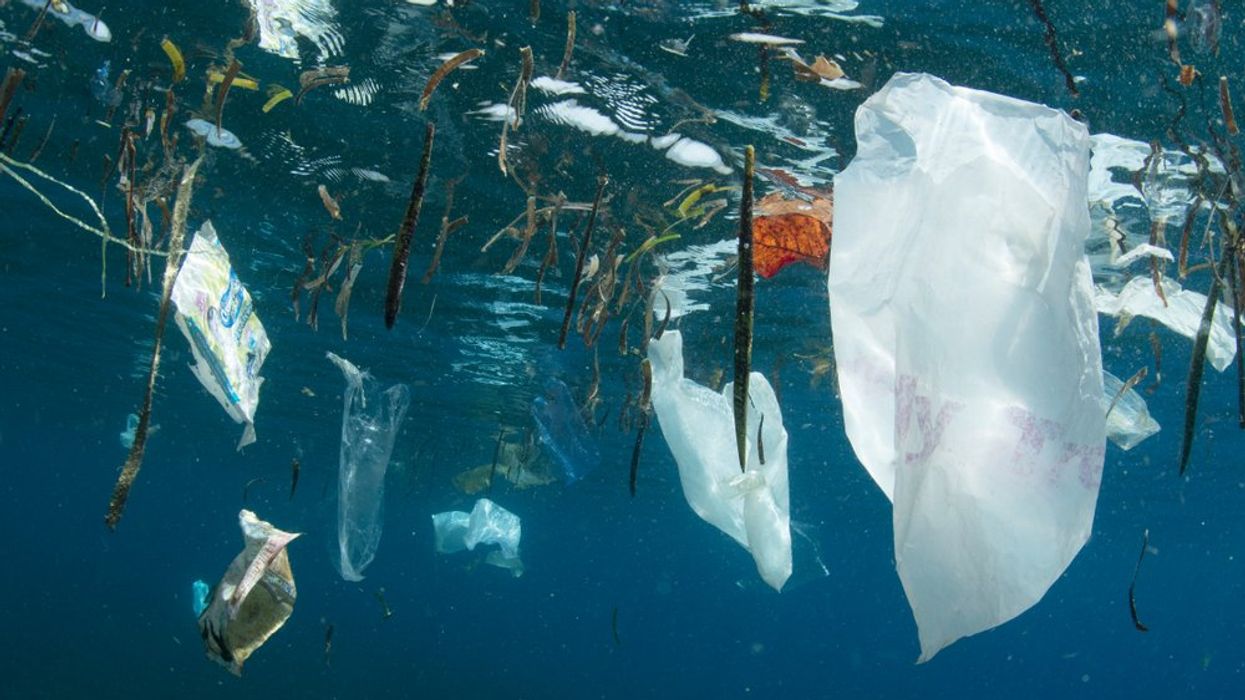(CNN) — Scientists have found thriving communities of coastal creatures, including tiny crabs and anemones, living thousands of miles from their original home on plastic debris in the Great Pacific Garbage Patch — a 620,000 square mile swirl of trash in the ocean between California and Hawaii.
In a new study published in the Nature Ecology & Evolution journal on Monday, a team of researchers revealed that dozens of species of coastal invertebrate organisms have been able to survive and reproduce on plastic garbage that's been floating in the ocean for years.
The scientists said that the findings suggest plastic pollution in the ocean might be enabling the creation of new floating ecosystems of species that are not normally able to survive in the open ocean.
Unlike organic material that decomposes and sinks within months or, at most, a few years, plastic debris can float in the oceans for a much longer time, giving creatures the opportunity to survive and reproduce in the open ocean for years.
"It was surprising to see how frequent the coastal species were. They were on 70 percent of the debris that we found," Linsey Haram, a science fellow at the National Institute of Food and Agriculture and the study's lead author, told CNN.
Haram and her colleagues examined 105 items of plastic fished out of the Great Pacific Garbage Patch between November 2018 and January 2019. They identified 484 marine invertebrate organisms on the debris, accounting for 46 different species, of which 80% were normally found in coastal habitats.
"Quite a large percentage of the diversity that we found were coastal species and not the the native pelagic open ocean species that we were largely expecting to find," Haram said.
They did still find a lot of open ocean species, Haram added. "On two thirds of the debris, we found both communities together ... competing for space, but very likely interacting in other ways."
Haram said that the consequences of the introduction of new species into the remote areas of the ocean are not yet fully understood.
"There's likely competition for space, because space is at a premium in the open ocean, there's likely competition for food resources — but they may also be eating each other. It's hard to know exactly what's going on, but we have seen evidence of some of the coastal anemones eating open ocean species, so we know there is some predation going on between the two communities," she said.
How exactly the creatures get to the open ocean and how they survive there remains unclear. Whether, for example, they were just hitching a ride on a piece of plastic they attached themselves to by the coast, or whether they were able to colonize new objects once they were in the open ocean, is unknown.
Oceans of plastic
The Great Pacific Garbage Patch, which is twice the size of Texas, is the largest accumulation of ocean plastic in the world.
The patch is bounded by an enormous gyre — the biggest of five huge, spinning circular currents in the world's oceans that pull trash towards the center and trap it there, creating a garbage vortex.
It's a mistake to think of the Great Pacific Garbage Patch as an island of trash, though, Matthias Egger, the head of environmental and social affairs at The Ocean Cleanup, a non-profit developing technologies to rid the oceans of plastic, told CNN.
"If you're out there, what you see is just pristine blue ocean," said Egger, who helped Haram's research by collecting the samples in the patch, fishing them out with a net.
"You can think of it like the night sky. If you look up at night, you see all those white dots, that's essentially what you see in the garbage patch. It's not that dense, but there are a lot of them ... out there, you start seeing more and more plastic the longer you look," he said.
The Ocean Cleanup initiative estimates there are about 1.8 trillion pieces of plastic in the patch that weigh an estimated 80,000 tonnes. The majority of the plastic found in the patch comes from the fishing industry, while between 10% and 20% of the total volume can be traced back to the 2011 Japanese tsunami.
According to the United Nations Environment Programme (UNEP), the world produces around 460 million tons of plastic a year, a figure that — without urgent action — will triple by 2060.
Globally, only around 9 percent of plastic waste is recycled, according to UNEP. As much as 22 percent of all plastic waste is mismanaged and ends up as litter, with large amounts eventually making it into the oceans.
Scientists have warned there has been a "rapid and unprecedented" increase in ocean plastic pollution since 2005.
"The problem is getting bigger and bigger by the minute," Egger said. "We see turtles that are entangled in ghost fishing nets. Sometimes it's even just turtle carcasses. We see ingestion of plastic fragments. Then there's also the pollutants — chemicals."
The Ocean Cleanup has built a huge trash-collecting system, a U-shaped barrier with a net-like skirt that hangs below the surface of the water. It moves with the current and collects faster-moving plastics as they float by.
"We want to look into what's the impact on marine life. And once we know for sure that it's safe and it benefits the environment, then we want to scale up," Egger said.
But cleanup is only part of the solution. A study published last month said that without urgent policy action, the rate at which plastics enter the oceans could increase by around 2.6 times between now and 2040.
The UN Environment Assembly passed a historic resolution last year to end plastic pollution and create the world's first global plastic pollution treaty by 2024 — a legally binding agreement that would address the full life cycle of plastic, from its production and design to its disposal.
The-CNN-Wire
™ & © 2023 Cable News Network, Inc., a Warner Bros. Discovery Company. All rights reserved.


















































